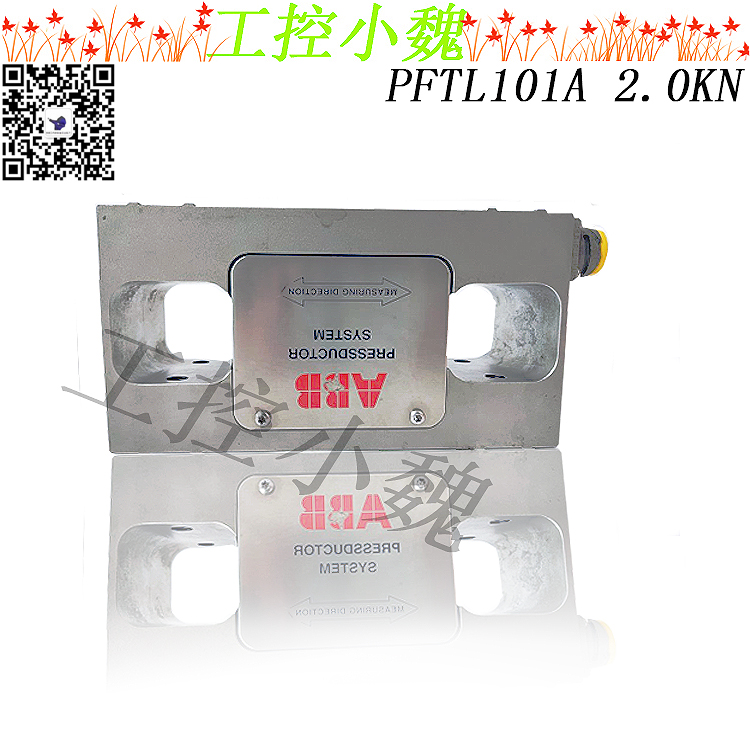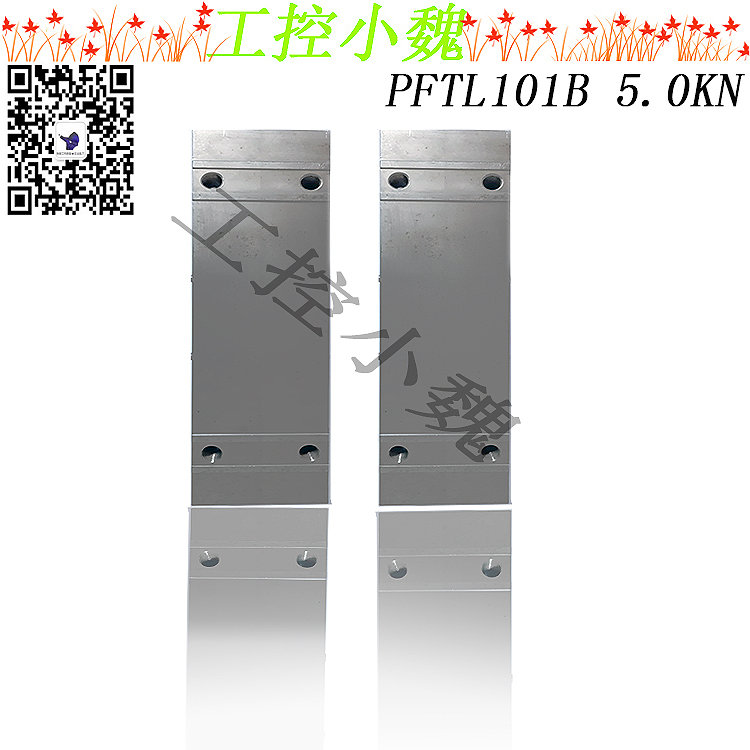
ABB PFTL101A1.0KN3BSE004166R1plc控制系统的设计内容(1)根据设计任务书,进行工艺分析,并确定控制方案,它是设计的依据(2)选择输入设备(如按钮、开关、传感器等)和输出设备(如继电器、接触器、指示灯等执行机构)。 (3)选定PLC的型号(包括机型、容量、I/O模块和电源等 (4)分配PLC的I/O点,绘制PLC的I/O硬件接线图 (5)编写程序并调试 (6)设计控制系统的操作台、电气控制柜等以及安装接线图。 (7)编写设计说明书和使用说明书。劳动力短缺、人才匮乏





、危险系数高是传统建筑业的常见问题,生产自动化成为当下可靠的解决方案之一。机器人自动化能够提升行业安全性、可持续性和成本效益。今年来,ABB致力于提高建筑行业的生产柔性、效率和质量,在建筑领域的应用不断拓宽,目前已有大批创新应用投入使用。可编程控制器是一种数字运算操作的电子系统,专为在工业环境下应用而设计。它采用了可编程序的存储器,用来在其内部存储执行逻辑运算,顺序控制、定时、计算和算术运算等操作的指令,并通过数字式和模拟式的输入输出,控制各种类型的机械或生产过程。PLC是微机技术与传统的继电接触控制技术相结合的产物,它克服了继电接触控制系统中机械触点的接线复杂、可靠性低、功耗高、通用性和灵活性差的缺点,充分利用微处理器的优点。 可编程控制器对用户来说,是一种无触点设备,改变程序即可改变生产工艺,因此可在初步设计阶段选用可编程控制器,在实施阶段再确定工艺过程。另一方面,从制造生产可编程控制器的厂商角度看,在制造阶段不需要根据用户的订货要求专门设计控制器,适合批量生产。由于这些特点,可编程控制器问世以后很快受到工业控制界的欢迎,并得到迅速的发展。目前,可编程控制器已成为工厂自动化的强有力工具,得到了广泛的应用。
用户可以用编程器读出RAM中的内容,也可以将用户程序写入RAM,因此RAM又叫读/写存储器。它是易失性的存储器,将它的电源断开后,储存的信息将会丢失。 RAM的工作速度高,价格低,改写方便。为了在关断PLC外部电源后,保存RAM中的用户程序和某些数据(如计数器的计数值),为RAM配备了一个锂电池。现在有的PLC仍用RAM来储存用户程序。 锂电池可用2~5年,需要更换锂电池时,PLC面板上的“电池电压过低”发光二极管亮,同时有一个内部标志位变为l状态,可以用它的常开触点来接通控制屏面板上的指示灯或声光报警器,通知用户及时更换锂电池。 (2)只读存储器(ROM) ROM的内容只能读出,不能写入。它是非易失的,它的电源消失后,仍能保存储存的内容。ROM—般用来存放PLC的系统程序。根据PLC梯形图程序扫描原则,按先左后右先上后下的步序,逐句扫描,执行程序。遇到程序跳转指令,根据跳转条件是否满足来决定程序的跳转地址。从用户程序涉及到输入输出状态时,PLC从输入映象寄存器中读出上一阶段采入的对应输入端子状态,从输出映象寄存器读出对应映象寄存器,根据用户程序进行逻辑运算,存入有关器件寄存器中。 致力于电气自动化设备的成套及提供生产线专业的自动化解决方案。在自动化技术方面(特别是冶金行业、有色金属加工行业),公司有着成功的经验。曾经多次和外方合作,完成带材冷轧、热轧、0整设备的设计、制作及调试。公司在旧设备改造方面亦有着成功的经验,合理利用客户的生产间隙,完成旧设备的改造升级,为客户节省了资金投入,同时又保证了正常的生产。对每个器件来说,器件映象寄存器中所寄存的内容,会随着程序执行过程而变化。供应链转型开启了一个实时的、端到端透明和绩效管理的新时代。这种技术发展的关键之一就是RFID标签和读取器,其有助于实现库存流程自动化、简化工作流程并加快生产线运转。 RFID 解决方案还能够对新兴的机器视觉解决方案构成补充并与其集成,以提高流程准确性和可靠性。在预测分析的加持下,公司就能够以0确到每周的水平,更准确地预测零件或成品的未来需求。规范性分析为现在可以或应该采取哪些行动使供应链尽可能地免受相关操作错误或潜在破坏性事件影响提供了明确的指导。
推动供应链 4.0 实现这种演变的是自动化和可追溯技术的重大进步。例如,RFID 扫描技术更新了传统的二维条码,提高了生产力,同时可以与机器视觉和预测分析等其他解决方案集成。固定式 RFID 读取器将在未来仓库环境中发挥重要作用。当与其他先进的解决方案结合,RFID 技术能够为仓库或配送中心的关键经济驱动力提供支持,包括资产可见性、生产力、质量控制以及追踪和追溯等。
RFID 技术在仓库和物流环境中部署变得越来越有效、也更具性价比,使其得到了更广泛的采用。但是,要实现的(ROI),需要与解决方案提供商合作,助力将技术集成到业务中,以避免出现孤立的工作流程,并限度地降低复杂性。制造工厂特别适合使用无源 RFID 读取器,因为那里的材料通常遵循固定路径通过设施。新的广域0 RFID 天线可以扩大扫描范围,以便对仓库中的每一项资产进行实时位置追踪。
在离散制造中,库存通常是序列化的,每个独特的零件都有专用的位置。使用 RFID 标签,生产经理能够确保材料正确排序,以便正确的组件在正确的时间进入生产线。
提高可见性不仅使机构能够在错误发生后检测到错误,还有助于防患于未然,预防问题的发生,避免可能损害公司声誉或盈利的潜在质量控制问题。此外,预防资产利用问题并加强对原材料的追踪,能够帮助企业在不影响生产力的情况下,维持生产线运行。供应链转型不仅限于一个或几个行业。大部分相同的供应链技术可以应用于多重行业--从汽车、服装到制药和杂货,从制造工厂和仓库延伸到交通运输,再到终分销点,例如零售商铺和医疗设施等。RFID 解决方案可以帮助杂货店、快餐店、食品供应商甚至医院显著提高库存可见性、降低成本并减少浪费。在门廊或冷却器等通道中安装无源 RFID 读取器,可在不增加劳动力成本的情况下,提高控制能力和可见性。RFID 还能提高药品供应链的可追溯性,并与温度监控解决方案集成,以提供更详细的信息。
可先在标量下运行逐步提高频率,观察电流波动是否较大。 存放要求
备用模件存放应满足的要求为:各种模件必须用防静电袋包装后存放或根据制造厂的要求存放,模件存贮室的温度、湿度也应满足制造厂的要求;存取模件时应采取防静电措施,禁止任何时候用手触摸电路板,并且进行登记,办理进、出库手续。
2 定期检查
应每半年对本专业保存的各种少量常用备件进行检查,检查内容如下:
(1)表面清洁、印刷板插件无油渍,印刷板插件无油渍,轻微敲击后无异常。
(2)软件装卸试验正常,通信口、手操站工作正常。
(3)各种模拟量、开关量输入、输出通道工作正常。
(4)装入测试软件,正常工作不少于48h以上。
(5)冗余模件的切换试验。
(6)检查后应填写检查记录,并粘上合格标志。
3 使用前检查
模件投入运行前必须检查各通信口、I/O功能、控制算法功能是否满足要求;在工程师站上对模件状态进行检查符合要求;在模件内装入组态,检查是否正确。
4 投用时确认
投用时,应该对模件地址和其他开关设定,并监护人确认后,方可插入正确的模位,并填写记录卡。
Design content of PLC control system
(1) According to the design specification, carry out process analysis and determine the control scheme, which is the basis of the design.
(2) Select input devices (such as buttons, switches, sensors, etc.) and output devices (such as relays, contactors, indicator lights and other actuators).
(3) Select the model of PLC (including model, capacity, I / O module and power supply, etc.).
(4) Allocate I / O points of PLC and draw I / O hardware wiring diagram of PLC.
(5) Write programs and debug.
(6) Design the operation console, electrical control cabinet, etc. of the control system and the installation wiring diagram.
(7) Prepare design instructions and operation instructions.
Labor shortage, talent shortage and high risk factor are common problems in the traditional construction industry. Production automation has become one of the reliable solutions at present. Robot automation can improve the safety, sustainability and cost-effectiveness of the industry. In the past year, abb has been committed to improving the production flexibility, efficiency and quality of the construction industry, and its application in the construction field has been continuously expanded. At present, a large number of innovative applications have been put into use. Programmable controller is an electronic system of digital operation, which is specially designed for application in industrial environment. It adopts programmable memory, which is used to store instructions for executing logical operations, sequence control, timing, calculation and arithmetic operations, and control various types of machinery or production processes through digital and analog input and output. PLC is the product of the combination of microcomputer technology and traditional relay contact control technology. It overcomes the shortcomings of complex wiring, low reliability, high power consumption, poor versatility and flexibility of mechanical contacts in relay contact control system, and makes full use of the advantages of microprocessor. The programmable controller is a non-contact device for the user, and the production process can be changed by changing the program. Therefore, the programmable controller can be selected in the preliminary design stage and the process can be determined in the implementation stage. On the other hand, from the perspective of manufacturers who manufacture programmable controllers, it is not necessary to specially design controllers according to the order requirements of users in the manufacturing stage, which is suitable for mass production. Because of these characteristics, the programmable controller was quickly welcomed by the industrial control industry after its appearance and developed rapidly. At present, programmable controller has become a powerful tool for factory automation and has been widely used.
Users can read out the contents of RAM with a programmer, and can also write user programs into RAM. Therefore, ram is also called read / write memory. It is a volatile memory. After its power is disconnected, the stored information will be lost. Ram has high working speed, low price and convenient rewriting. In order to save the user program and some data (such as the count value of the counter) in RAM after turning off the external power supply of PLC, ram is equipped with a lithium battery. Some PLCs still use ram to store user programs. The lithium battery can be used for 2-5 years. When the lithium battery needs to be replaced, the "battery voltage is too low" led on the PLC panel will be on, and an internal flag bit will change to l state. Its normally open contact can be used to connect the indicator light or audible and visual alarm on the control panel to inform the user to replace the lithium battery in time. (2) Read only memory (ROM) the contents of ROM can only be read, not written. It is nonvolatile, and it can still save the stored content after the power supply disappears. ROM is generally used to store the system program of PLC. According to the scanning principle of PLC ladder diagram program, scan sentence by sentence and execute the program according to the step sequence from left to right, from top to bottom. When a program jump instruction is encountered, the jump address of the program is determined according to whether the jump condition is satisfied. When the user program involves the input and output status, PLC reads out the corresponding input terminal status acquired in the previous stage from the input image register, reads out the corresponding image register from the output image register, performs logical operation according to the user program, and stores it in the relevant device registers. We are committed to complete sets of electrical automation equipment and provide professional automation solutions for production lines. The company has successful experience in automation technology (especially in metallurgy industry and non-ferrous metal processing industry). We have cooperated with foreign parties for many times to complete the design, manufacture and commissioning of strip cold rolling, hot rolling and finishing equipment. The company also has successful experience in the transformation of old equipment. It makes rational use of the production gap of customers and completes the transformation and upgrading of old equipment, which saves money for customers and ensures normal production at the same time. For each device, the contents registered in the device image register will change with the program execution process. Supply chain transformation has opened a new era of real-time, end-to-end transparency and performance management. One of the keys to the development of this technology is RFID tags and readers, which help to automate the inventory process, simplify the workflow and speed up the operation of the production line. RFID solutions can also complement and integrate with emerging machine vision solutions to improve process accuracy and reliability. With the support of prediction and analysis, the company can predict the future demand of parts or finished products more accurately at the weekly level. Normative analysis provides clear guidance on what actions can or should be taken to protect the supply chain from relevant operational errors or potentially destructive events as far as possible.
This evolution of supply chain 4.0 is driven by significant advances in automation and traceability technologies. For example, RFID scanning technology updates the traditional two-dimensional barcode, improves productivity, and can be integrated with other solutions such as machine vision and predictive analysis. Fixed RFID readers will play an important role in the future warehouse environment. When combined with other advanced solutions, RFID technology can support the key economic drivers of warehouses or distribution centers, including asset visibility, productivity, quality control, tracking and traceability.
RFID technology has become more and more effective and cost-effective in the warehouse and logistics environment, making it more widely used. However, to achieve (ROI), we need to work with solution providers to help integrate technology into the business, so as to avoid isolated workflow and minimize complexity. Manufacturing plants are particularly suitable for the use of passive RFID readers, where materials usually follow a fixed path through the facility. The new wide area advanced RFID antenna can expand the scanning range to track the real-time location of every asset in the warehouse.
In discrete manufacturing, inventory is usually serialized, and each unique part has a dedicated location. Using RFID tags, the production manager can ensure that the materials are sorted correctly so that the correct components can enter the production line at the right time.
Improving visibility not only enables organizations to detect errors after they occur, but also helps prevent problems from happening and avoid potential quality control problems that may damage the company's reputation or profits. In addition, preventing asset utilization problems and strengthening the tracking of raw materials can help enterprises maintain the operation of production lines without affecting productivity. Supply chain transformation is not limited to one or several industries. Most of the same supply chain technologies can be applied to multiple industries -- from automobiles and clothing to pharmaceuticals and groceries, from manufacturing plants and warehouses to transportation, and then to final distribution points, such as retail stores and medical facilities. RFID solutions can help grocery stores, fast food restaurants, food suppliers and even hospitals significantly improve inventory visibility, reduce costs and reduce waste. Installing passive RFID readers in corridors such as porches or coolers can improve control capability and visibility without increasing labor costs. RFID can also improve the traceability of the drug supply chain and integrate with temperature monitoring solutions to provide more detailed information.
The frequency can be gradually increased by running under scalar to observe whether the current fluctuation is large. Storage requirements:
The storage of spare modules should meet the following requirements: all modules must be packaged with anti-static bags and stored or stored according to the requirements of the manufacturer, and the temperature and humidity of the module storage room should also meet the requirements of the manufacturer; Anti static measures shall be taken when accessing the modules. It is forbidden to touch the circuit board with hands at any time, and registration shall be carried out, and entry and exit procedures shall be handled.
2 regular inspection
A small number of common spare parts kept by the discipline shall be inspected every six months. The inspection contents are as follows:
(1) The surface is clean, the printed board plug-in is free of oil stain, the printed board plug-in is free of oil stain, and there is no abnormality after slight tapping.
(2) The software loading and unloading test is normal, and the communication port and manual operation station work normally.
(3) Various analog and switching input and output channels work normally.
(4) Load the test software and work normally for no less than 48h.
(5) Switching test of redundant modules.
(6) After the inspection, the inspection record shall be filled in and the qualified mark shall be pasted.
3 pre use inspection
Before the module is put into operation, check whether the communication ports, I / O functions and control algorithm functions meet the requirements; Check the status of the module on the engineer station and it meets the requirements; Load the configuration into the module and check whether it is correct.
4. Confirmation when putting into use
When putting into use, the module address and other switches shall be set and confirmed by the supervisor before inserting the correct module position and filling in the record card.